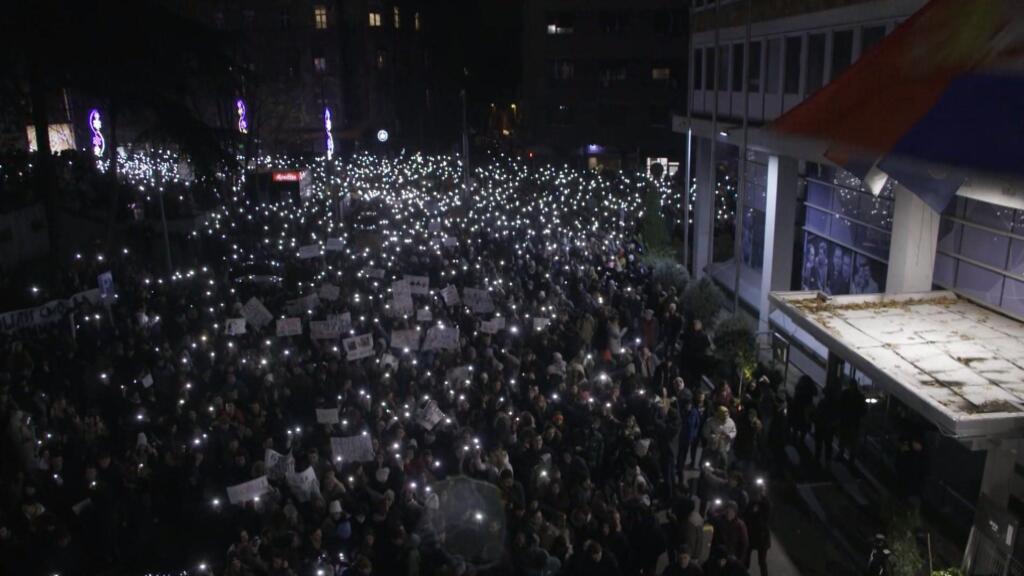In an era of existential economic despair across the EU, one of its larger members is consistently posting positive numbers: Poland.
Its GDP growth rate of about 3% in 2024 puts it ahead of the EU’s overall rate of 1%, as well as France and Germany, the bloc’s two largest economies. France recorded a rate of 1.2% while Germany suffered a -0.2% contraction.
The signs for 2025 are also positive. Poland recorded growth of 0.8% in the second quarter, the fifth-best rate in the EU. Growth is estimated at about 3.3% this year, with a 3% rate expected next year.
This is not an overnight success either. Since joining the EU in 2004, average annual growth has been around 4%, a rate that has accelerated substantially over the past decade.
Yet there is a special momentum at this time. Its stock market is rising and there is growing optimism about its potential to become one of the EU’s strongest and most dynamic economies.
“Over the past two decades, Poland has definitely done better,” Katarzyna Rzentarzewska, chief macro analyst for Central and Eastern Europe at Erste Group, told DW.
“Real GDP has doubled. This is something excellent. Obviously, this is part of the process of convergence, but overall, Poland is different.”
size matters
Jacob Funk Kierkegaard, non-resident senior fellow at the Peterson Institute for International Economics, says Poland’s success has been mirrored to some extent by other Eastern European and Baltic states, but its size is a key difference.
“Poland is bigger,” he told DW. “So it really matters, if you like, at the overall EU level – in a way that it doesn’t in a much smaller economy – politically and in terms of economic weight.”
Poland has a population of 37 million, the fifth largest in the European Union. Its economy now ranks among the top 20 in the world in terms of GDP.
Along with its growing economic strength is also its strategic and geopolitical importance. In recent years, it has increased defense spending to such an extent that it is now number one in NATO in terms of the share of GDP spent on defence, which currently stands at about 4.5%.
Most defense spending is on foreign orders rather than domestic production, but Rzentarzewska says much of Poland’s growth is driven by private consumption within the country rather than exports.
“It is a pillar of growth,” she says, adding that Poland’s strong domestic market can be seen in its low unemployment and strong real wage growth. It also gives it the ability to remain relatively safe from external shocks.
“When you see a global recession, obviously the smaller, export-oriented economies are hit first because that’s how the value chain works,” he said. “In Poland’s relatively closed economy, consumption remains strong.”
a model of integration
So what exactly has Poland done right? Rzentarzewska sees its successful integration into the EU, NATO, the Schengen Area and the OECD as key to its success.
“If we look at the broader concept of integration, Poland did it really well,” she says. Although it did not join the euro zone, it has benefited from extensive EU financing since joining in 2004.
“We can’t deny that access to European funds was huge – a major contributor to development,” she says. Kierkegaard agrees that Poland has “got the basics right”.
“They have used EU funding to significantly improve their infrastructure,” he says. “They have completely eliminated the street-level corruption that was rampant during the communist years. They have basically succeeded in creating a very welcoming business environment. They have a generally well-educated workforce.
“Poland is a poster child for successful EU integration. They needed to get it right because they’re so big. And they got it right.”
Political divisions threaten EU wealth
Still, there are potential headwinds. Over the past two decades, Poland has been politically divided between a large right-wing faction led by the populist and conservative Law and Justice party and a liberal, center-left faction, currently led by Prime Minister Donald Tusk’s Civic Coalition.
Tusk’s coalition is more pro-EU and his group’s victory in the 2023 parliamentary elections was seen as helpful in securing long-term EU funding for Poland, given that Law and Justice had regular disputes with Brussels over judicial independence when it was in power.
The victory of Karol Nawrocki, a Eurosceptic independent candidate supported by Law and Justice, in the 2025 presidential election was seen as potentially damaging to Poland’s future EU relations.
A few weeks after taking power in 2023, Tusk was able to convince the European Commission to release €137 billion of funding, provided he brings Poland’s justice system back in line with EU norms and rules.
However, his efforts to consider the possible removal of judges appointed during his Law and Justice term in government are bringing him into direct conflict with Nwarokki.
Yet Rzentarzewska says that despite its political divisions, Poland has made economic progress under both factions. “Poland is a good example of how you can have progress and dynamic development under different political parties or orientations, whether it’s conservative or more liberal,” he said.
New Germany?
She says that the additional welfare spending brought about by Law and Justice, such as child benefit, has been beneficial and has helped boost the economy.
However, she also warns that excess spending, coupled with increased defense spending and inflationary shocks following the pandemic, have contributed to a tight fiscal situation in Poland.
According to recent plans presented by Polish Finance Minister Andrzej Domanski, Poland’s government deficit will amount to 6.5% of GDP in 2026.
Rafal Benecki, chief economist for Poland at ING, says Poland’s strong growth rates mean ratings agencies and investors are generally not concerned, but he believes the country needs “a concrete fiscal adjustment plan to boost confidence.”
“Poland will need to deal with this,” says Rzentarzewska. “It has to go through fiscal consolidation, fiscal austerity and that’s obviously something that could slow down growth.”
But she emphasizes that the current climate of confidence is justified. “Low unemployment rates, consumer confidence and, importantly, higher productivity – all of these enhance overall sentiment, positive sentiment and the performance of the economy.”
Kierkegaard agrees and says Poland can teach the rest of the EU a lot about economic dynamism and resilience.
“There was a time when Michigan and what is now the ‘Rust Belt’ in the United States was an economically dominant part of the American economy,” he said. “That’s not the case now.
“But if you assume that Germany is unable to reform itself and Poland continues to perform the same way it has since becoming an EU member 20 years ago, it will eventually eclipse the likes of Germany, which could become like the rust belt of Europe.”
Edited by: Christy Pladson






Leave a Reply